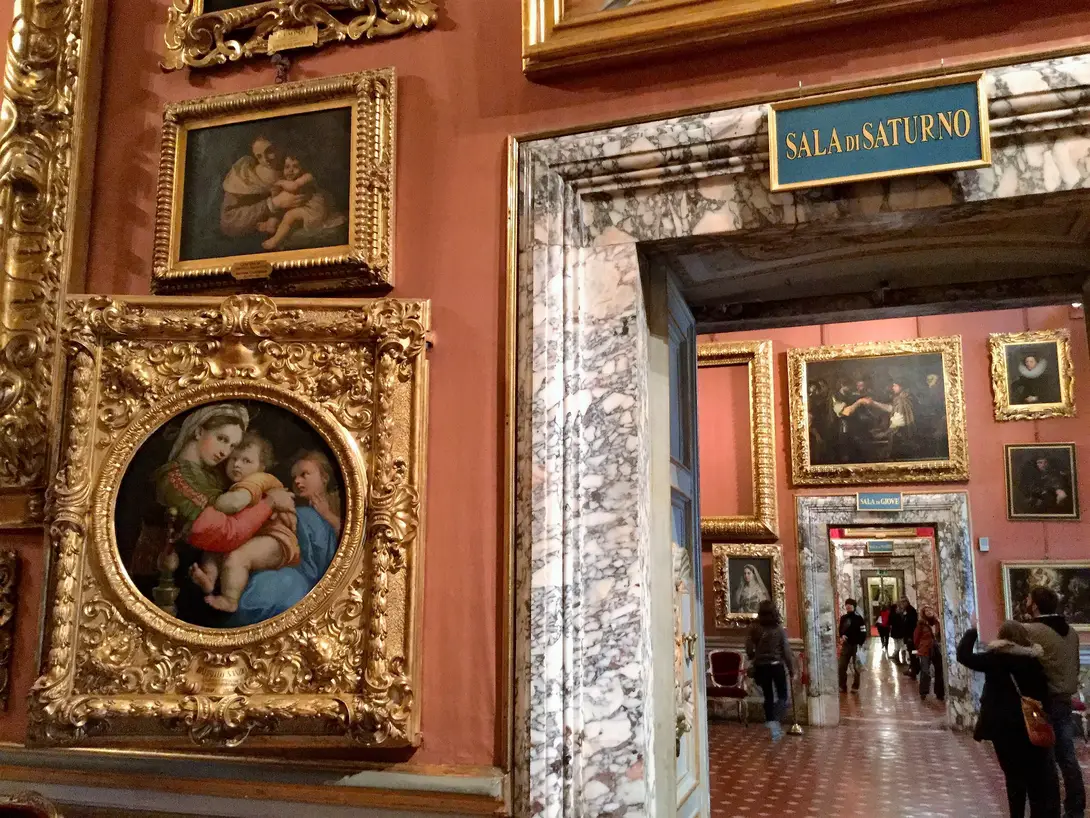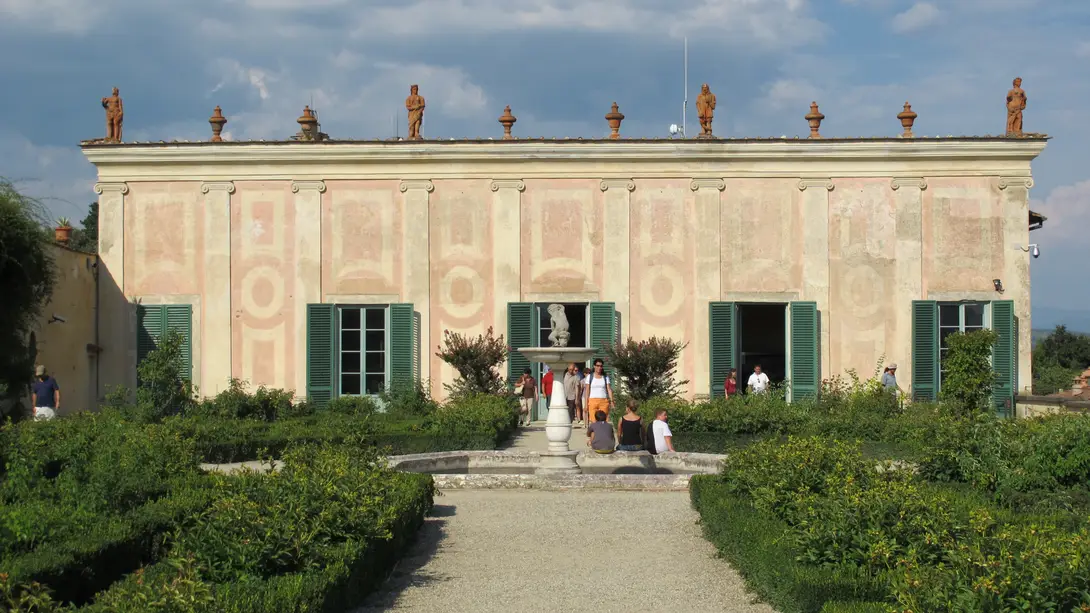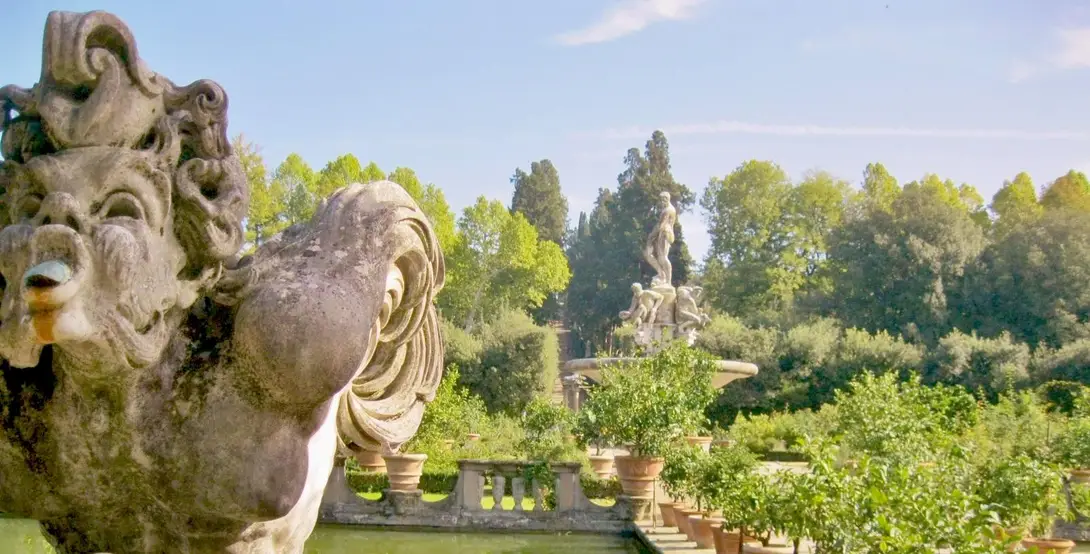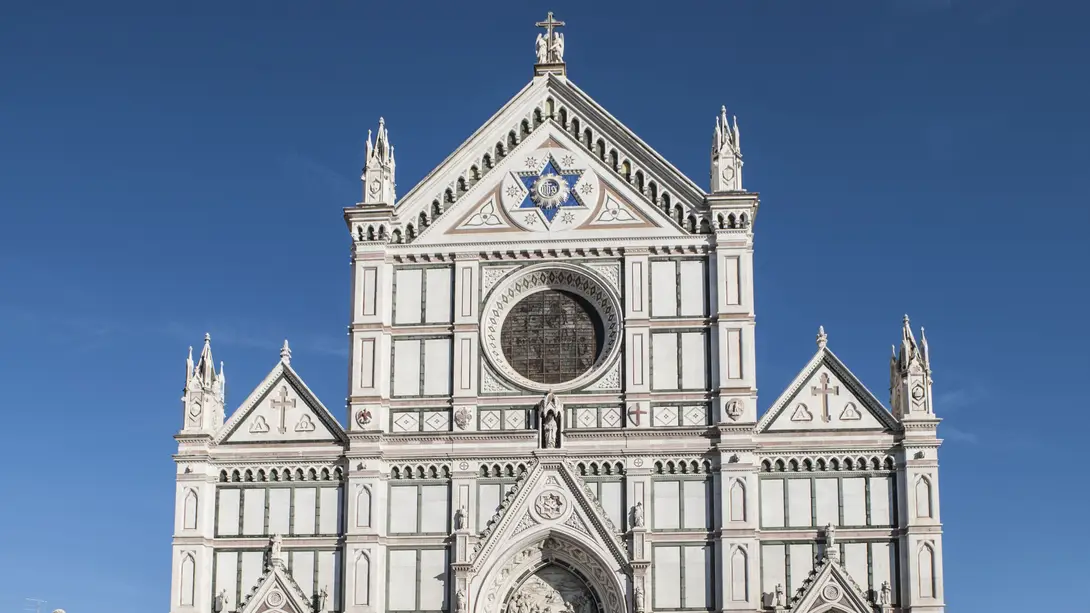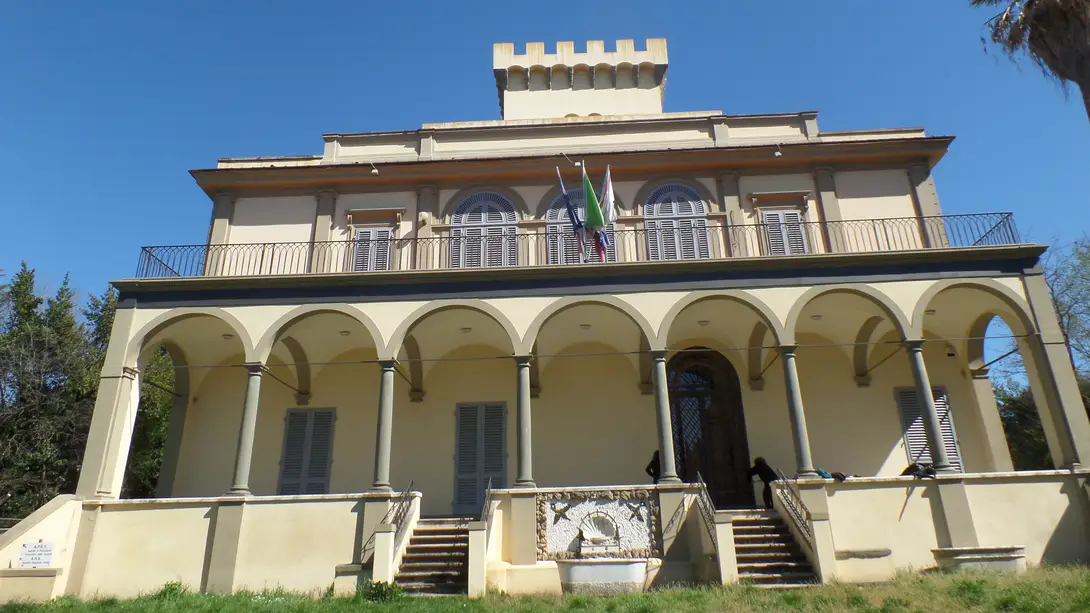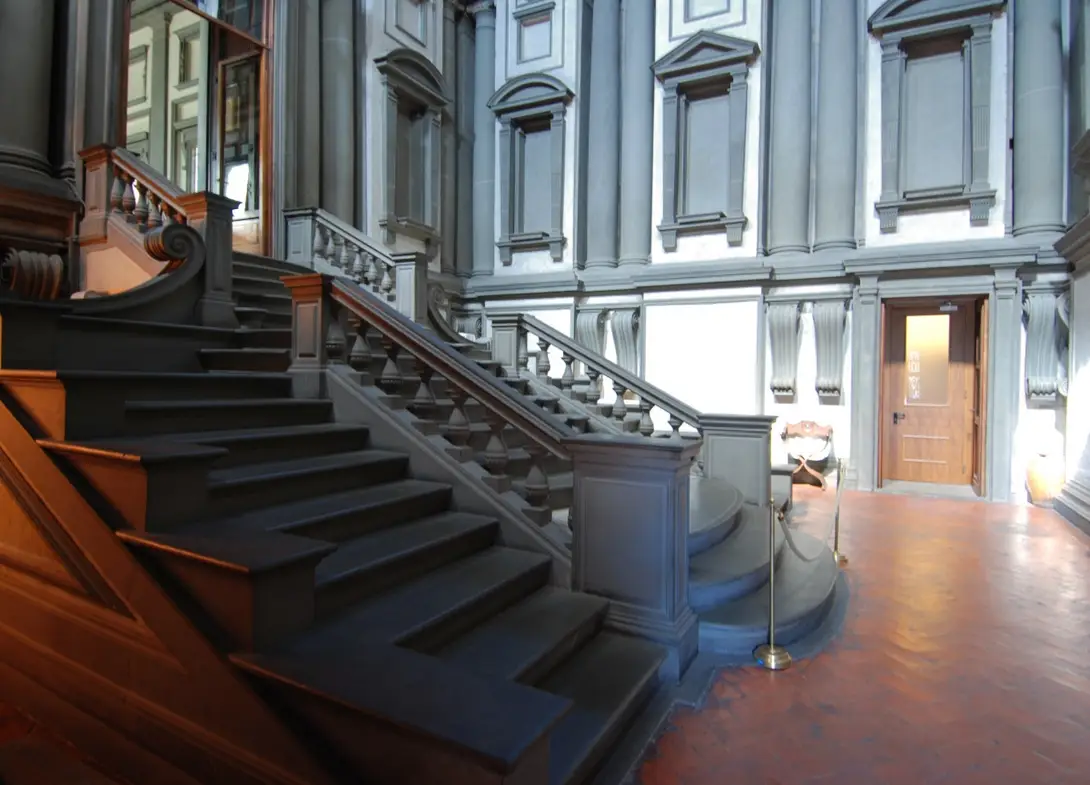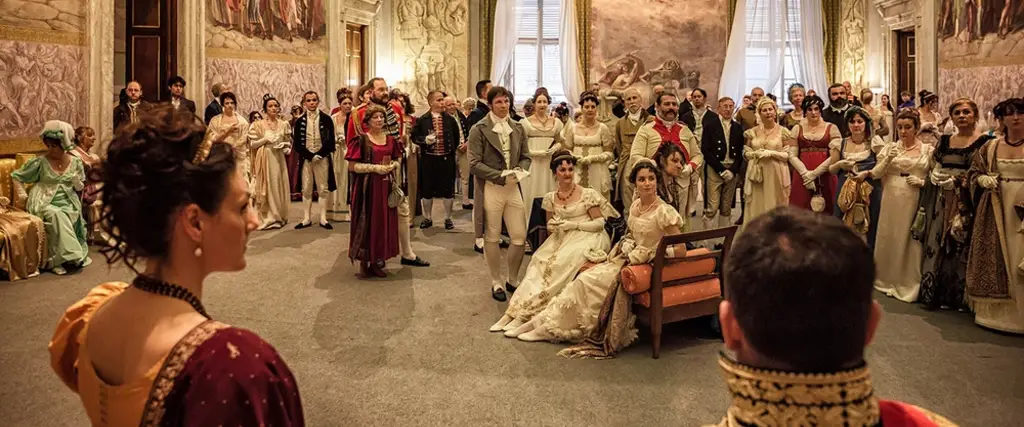
The Bonaparte family in Florence
“From the Alps to the Pyramids… ”, thus Alessandro Manzoni describes the lightning-quick conquests of Napoleon I in continental Europe in his poem “The Fifth of May”. The kingdoms he conquered were distributed to his numerous siblings and relatives: Spain, Westphalia, Holland, and in Italy Naples and also Tuscany…
Our region was assigned to Napoleon’s sister Elisa Baciocchi Bonaparte, Princess of Piombino and Duchess of Lucca, who also received the title of Grand Duchess of Tuscany. Elisa came to Florence in 1809 and, after spending a large sum of money to restore and furnish Pitti Palace, elected it as her residence (today we can still admire the beautifully decorated bathroom of the Royal Apartments and a famous porcelain collection she ordered from Sèvres, featured in the Porcelain Museum). Even Boboli Garden underwent some changes during those years.The Grand Duchess ruled following the Napoleonic Code legislative arrangements (a copy is conserved in the Biblioteca Medicea Laurenziana) and promoted Sciences, Literature and Arts, sponsoring in particular Florence’s Fine Arts Academy, the Liceo Regio and Accademia della Crusca.
The second sister of Napoleon, Paolina (who posed as “Venus” for Antonio Canova’s famous sculpture), was also quite attached to Florence and chose to spend here her last days, dying in Villa Fabbricotti in 1825, assisted by her consort, Prince Camillo Borghese, owner and restorator of Palazzo Borghese in via Ghibellina. When Paolina died she left a good portion of her possessions to her younger sister Carolina, who chose to come back to Florence after her exile in Austria had ended. She bought a luxurious building (today turned into an hotel, Hotel Excelsior) in piazza Ognissanti, which soon became a meeting point for intellectuals. Carolina was buried in a chapel of Ognissanti Church, just a few steps away from her Florentine home, under a simple tombstone.
In the right arm of the transept of the Basilica of Santa Croce is the Bonaparte Chapel, purchased by Giuseppe, King of Naples, to bury his daughter Charlotte. His wife Giulia and his niece Marie-Albertine are also buried here. Napoleon’s brothers also lived in Florence: Luciano, prince of Canino; Luigi, whose son Carlo Luigi later became Napoleone III; Giuseppe, who died in 1844 in Palazzo Serristori in Oltrarno.
In 1847, the Florentine period of the Bonaparte family came to an end, a period that extended well beyond the historical limits of the Lorena Restoration under Ferdinand III, without, however, causing a definitive break with the past.
Coltrane Koh photography. MUS.E
The places
Stages
Palatine Gallery and Royal Apartments - Pitti Palace
The Palatine Gallery and the Royal Apartments occupy the whole of Palazzo Pitti’s piano nobile. The gallery was established in the late 18th and early 19th centuries by the Lorraine, who hung a mass of artworks, principally from the Medici collections begun around 1620, in the reception rooms. There are works by Raphael, Titian, Caravaggio, Rubens, Pietro da Cortona and other Renaissance and 17th-century artists from Italy and elsewhere in Europe.
The walls of the rooms are plastered with paintings, in keeping with the tradition of 17th-century picture galleries: they are not arranged chronologically or by school, but reflect the personal taste of the collectors. There is a fine Madonna and Child by Filippo Lippi, some of Raphael’s most famous paintings, including the so-called Madonna del Granduca and La Velata, a Young Saint John the Baptist by Andrea del Sarto, Titian’s La Bella and portraits by Veronese and Tintoretto.
The Royal Apartments consist of fourteen rooms in the right wing of the palace, formerly the private residence of the ruling families, and are furnished with furniture, trappings and artworks ranging from the 16th to 19th centuries.
The Porcelain Museum - Pitti Palace
The Porcelain Museum is in the 18th-century Palazzina del Cavaliere at the top of the Boboli Gardens, in the middle of the Rose Garden. It houses collections of table porcelain once belonging to the succession of rulers who occupied Palazzo Pitti, with representative selections of Italian and European production ranging from the Doccia Manufactory (founded by the Ginori family) to the porcelain of Sèvres and Meissen. Of particular interest is the dinner service produced in Sèvres in 1809–10 for Elisa Baciocchi, a gift from her brother, Emperor Napoleon.
Boboli Gardens
The Medici family was the first to take care of the Boboli garden’s arrangement, creating the model of the Italian-style garden, then an example for many European courts, in which a rational order is given to the vegetation and the geometries of the avenues and plants are embellished with grottoes, statues and fountains.
Opened to the public in 1766, it is a real open-air museum: valuable are the Roman statues and those of Renaissance sculptors such as Baccio Bandinelli and Giambologna; the amphitheatre, where court performances took place; the Grotta del Buontalenti, where Michelangelo's Prisons were placed (now replaced by copies).
Piazza Ognissanti
Piazza Ognissanti rises along the right bank of the Arno and is located in the western part of the center of Florence.
It is overlooked by important historic buildings and the church of San Salvatore in Ognissanti, renowned above all for the important artistic heritage it boasts, including works by Ghirlandaio and Botticelli.
On the right side of the square overlooks the Hotel Excelsior, formerly Palazzo Bonaparte and residence of Carolina, Napoleon's sister. Opposite, on the other side of the square, is the French Consulate and Institute.
Basilica di Santa Croce
Designed by Arnolfo di Cambio (1296), it is the largest Franciscan church in the world; it is also known as the "Pantheon of Italian glories" for its illustrious tombs (Michelangelo, Galileo, Machiavelli, Rossini, Foscolo, Alfieri) that it preserves in the suggestive Gothic interior.
Among the more than 200 tombs, the two Renaissance monuments stand out, masterpieces of Rossellino and Desiderio da Settignano.
Of the numerous chapels in the transept, frescoed in the fourteenth century, authentic masterpieces are the Bardi and Peruzzi chapels, frescoed by Giotto; remarkable are also the works of Donatello (the Annunciation and the Crucifix). The famous Crucifix of Cimabue damaged by the 1966 flood, instead, is displayed in the sacristy. The museum itinerary includes the Cappella dei Pazzi, by Brunelleschi, the two cloisters and the Last Supper, frescoed by Taddeo Gaddi, a treasure chest of numerous works of art (Donatello, Orcagna, Domenico Veneziano).
Parco di Villa Fabbricotti
In 1864, Giuseppe Fabbricotti bought “Lo Strozzino” property and, in the same year, he commissioned architect Vincenzo Micheli to turn the old hunting lodge into a luxurious residence. None of the documents known indicates the name of the author of the garden, which may be attributed to Giuseppe Poggi.
Biblioteca Medicea Laurenziana
The Biblioteca Medicea Laurenziana originates from the collection of Cosimo the Elder de' Medici (1389-1464), considerably enriched by Lorenzo the Magnificent (1449-1492) and “his” circle of humanists. His nephew Giulio - Pope Clement VII - entrusted the architectural project to Michelangelo Buonarroti: work began in 1524 and continued for a decade until Michelangelo's final departure for Rome. The Library was opened to the public in 1571 by Cosimo I de' Medici.
The Michelangelo Monumental Rooms can be visited: from the Vestibule, one enters through a monumental staircase, of extraordinary theatrical effect, into the Reading Room, divided by two rows of benches with wooden inlays, also designed by Michelangelo. The floor, in red and white terracotta, was created from 1548 onwards and has the central part inlaid with the ornamental motifs and symbolic images that also decorate the ceiling and refer to the Medici dynasty.
The Library, consultation of which is reserved exclusively for scholars, today holds approximately 11,000 manuscripts, 2,500 papyri, 566 incunabula, 1,681 16th century books and approximately 120,000 printed editions (17th to 20th century).
Palazzo Borghese
One of the most important neoclassical buildings in Florence, it overlooks Via Ghibellina, a stone's throw from the Bargello Museum.
Originally from the Salviati family, its original nucleus is due to Michelozzo (1437), but the main transformation of the interior took place in the Baroque era, thanks to Gherardo Silvani. At the end of the 18th century the palace passed to the powerful Borghese family. In particular Camillo Borghese, husband of Paolina Bonaparte (Napoleon's sister), was responsible for the renovation of the imposing façade in neoclassical style (Gaetano Baccani, 1822). The interior, sumptuously decorated, is not open to the public.
